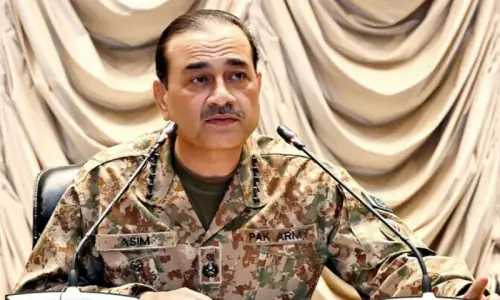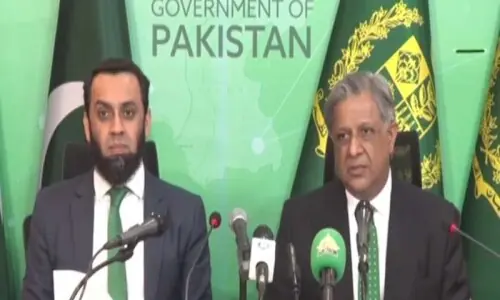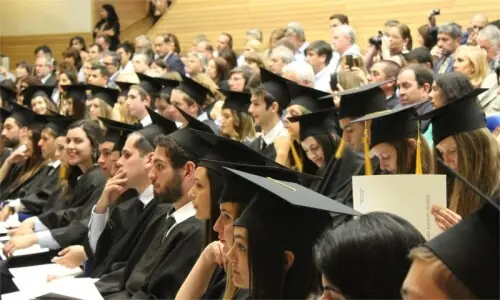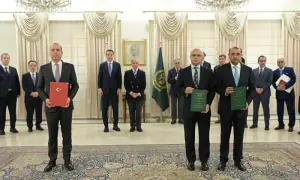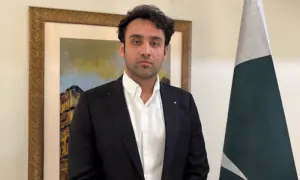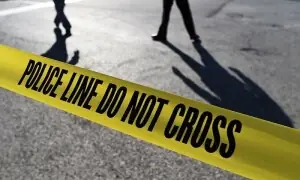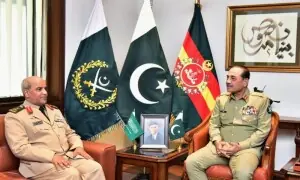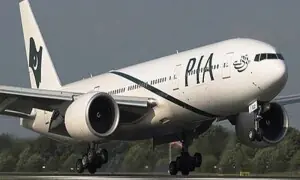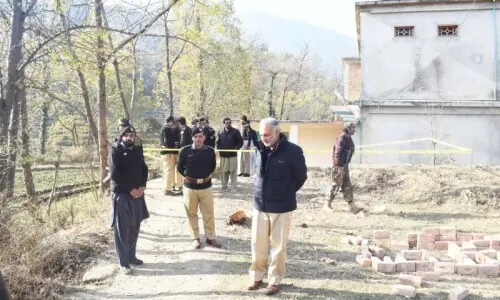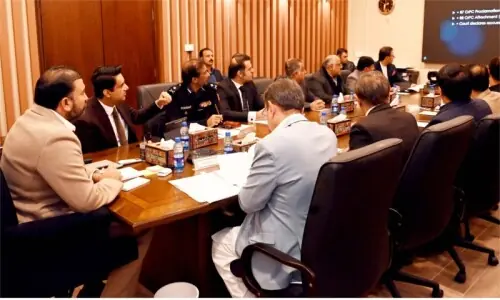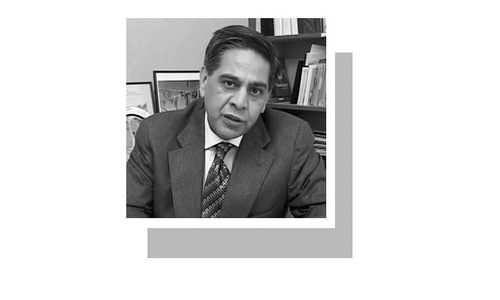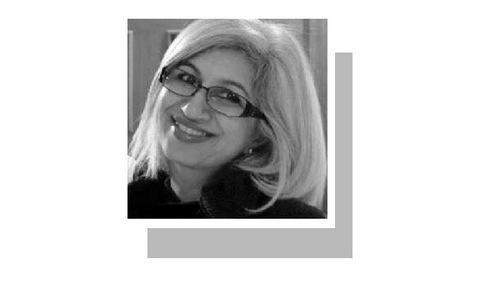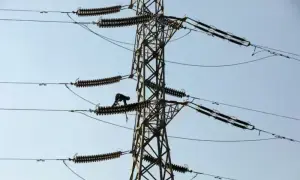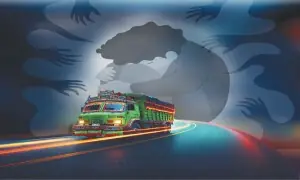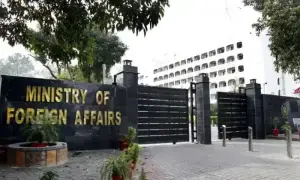
ON the evening of March 13, Director Orangi Pilot Project Perween Rahman was shot and killed by masked men half a kilometre from her office just off Manghopir Road in Karachi. The police were quick to point a finger at the Tehreek-i-Taliban Pakistan (TTP).
In an “encounter” the very next day, they killed Qari Bilal who they claimed was a leader of the TTP and the mastermind behind Ms Rahman’s murder. Many in the development sector, however, believe she was targeted because she had fallen foul of the city’s land mafia because she was placing their activities on record. They may both well be right, even if Qari Bilal was falsely accused by law-enforcement agencies.
The latest players in Karachi’s land grab — for long the domain of those with close links to the major political parties and forces amongst the establishment here — are TTP elements who have been putting down their roots in various parts of the city over the past couple of years.
Large swathes of Pakhtun neighborhoods in districts west and east, as well as pockets in districts Malir, central and south are reported to be under the influence of the TTP. While all 30 or so of its factions have a presence in the city, the most influence is wielded by the Hakimullah Mehsud and Mullah Fazlullah factions.
According to local police and residents of the affected areas, elements belonging to the TTP have entrenched themselves in these areas after having terrorised the local Pakhtun population into submission, and driven out the ANP from most of its traditional strongholds.
In the past few years, after it won two provincial seats in the 2008 elections and acquired real political clout in Karachi, the ANP and MQM frequently clashed in a deadly turf war. Both accused the other of killing its workers. In 2010 and 2011, when the MQM began to allege that the Taliban were acquiring a presence in the city, the ANP accused it of trying to use that claim as a pretext to ethnically cleanse Karachi of Pakhtuns. However, on 13th August 2012, when an attack in Frontier Colony killed local ANP office bearer and former UC nazim, Amir Sardar, and two party workers, the ANP did not accuse the MQM. Since then, numerous ANP offices have been shut down, scores of its workers killed and many driven out of Pakhtun-dominated areas. Qadir Khan, an ANP spokesman who has now joined the MQM, says “no political party or group can stand up to these militants”.
The TTP affirmed its presence in Karachi for the first time when the organization claimed responsibility for an attack on The Business Recorder/Aaj TV offices on 25 June, 2012 as a warning to rest of the media houses in the country.
The military operations in Swat and South Waziristan in 2009 triggered the latest wave of migration of Pakhtuns, compelling tens of thousands of residents to flee the fighting. Embedded within the exodus of these desperate internally displaced people (IDPs) were a number of Taliban fighters. Although the urban jungle that is Karachi had been a refuge for the latter even earlier, the untenable situation in their native areas prompted many of them to adopt a more permanent abode here.
The new arrivals, both IDPs and the TTP militants among them, gravitated towards where their compatriots had earlier settled, mostly in katchi abadis. Thus, for example, while natives of Swat moved into places like Pathan Colony in the west and Future Colony in Landhi in the city’s south-east, an influx of Waziris and Mehsuds from Waziristan, adjoining tribal agencies and settled areas moved into Sohrab Goth, parts of Manghopir, areas along the Northern Bypass and RCD Highway. This ultimately determined which TTP faction — usually either Hakimullah Mehsud or Mullah Fazlullah as mentioned before — held sway in that particular area.
The new migrants also took shelter in pockets within the heart of the city. According to one of Karachi’s most senior cops, there are more than 7,000 fresh Mehsuds in Sultanabad locality adjacent to the PIDC Bridge.
In 2010 and 2011 TTP elements were still gaining a foothold in the city, but last year saw them flexing their muscles to establish control over areas where they had a presence.
Let us just take the area on the northern side of Manghopir hills, where Ms Rahman was murdered on her way home. The militants are so well-entrenched here that confronting them is becoming exceedingly difficult even for law-enforcement agencies.
The SHO of the Pirabad police station discovered this to his peril one night in the spring of 2012. The official had received information that several militants were attending shab-e-dars inside Masjid-e-Tayyaba on the stretch of Qasba Road that is locally known as Ghausia Road. He arrived with a contingent and arrested the imam, Qari Fazal, and the nine militants who were present. However, while his men swept the building looking for more that may have been in hiding, he realised they were being surrounded by armed men. When the SSP Orangi received his SOS, he headed to his SHO’s support with additional police. Calls to other law enforcement agencies and relevant authorities within police for backup were met with refusal. The outnumbered police officials were roughed up by the militants and finally had to negotiate their release and that of their men, as well as set free the nine heavily armed militants they had apprehended.

About 100 metres east from Masjid-e-Tayyaba on this road is a building that houses the TTP office which operates by the name of “Anti Crime Control Committee”. A short distance from this office one comes across Masjid-e-Ibrahim where members of jihadi organisations gather for shab-e-dars every Thursday night. Further down Ghausia road is the dera (compound) of the transporter Haji Rohtas that was attacked with grenades last year, allegedly by the TTP for not paying extortion money in time. Swinging towards Manghopir road one comes upon Masjid-e-Aqsa and another office – euphemistically named Ittehad-e-Qabail (Tribal Alliance) – of the TTP. Less than half a kilometre from here is situated Masjid-e-Safa at Quarry Colony. Further down are Pakhtunabad, Gulzarabad and Sultanabad, which also fall within the TTP stronghold in Manghopir.
Late last year, when the government released several Taliban prisoners as a goodwill gesture towards the Karzai government, there were wild celebrations in the part of this area that lies just north of Kati Pahari. These included a procession of vehicles, including four Vigos (double-cabin pickups), packed with young men firing incessantly into the air. According to Akbar Khan, a Pakhtun resident of the area and himself no stranger to celebratory firing, one of the men was standing head first on the bonnet of the lead Vigo, balancing himself on one hand as he triumphantly fired his gun into the air with the other, over and over again. “I have never seen something like this in my life,” he says. “That is how battle-hardened they are.”
The social order in these settlements has gradually reshaped itself to allow the TTP to set up courts for residents looking for a quick resolution to their problems in places like Quarry Colony, Gulshan-e-Buner (Landhi) and Sohrab Goth. Here, the qazi presides over a jirga-like setting, to pronounce judgment in the light of a mix of tribal traditions and his understanding of the Shariah.
The close links between the TTP, the Afghan Taliban, sectarian and other jihadi organisations in Pakistan’s tribal areas continue outside that theatre of war.
Khyber Mohalla, which lies towards the hill slopes east of the afore-mentioned Tayyaba Masjid , is populated mostly by Afghan refugees. Many claim that the area’s Allahu Akbar Masjid and Maulana Zarghai’s adjoining madrassa serve as a rest house for Afghan Taliban visiting the city. According to some local PPP and ANP supporters, the notorious extortionist Bhalo who now operates in tandem with the TTP lives nearby, close to the summit of the Manghopir Hills, competing for influence in the area with a lesser known criminal Kamran aka Kami who us believed to be affiliated with a sectarian group.
Further north, members of the Harkat-ul-Mujahideen are reportedly holed up in Sultanabad. They were led by Maulvi Haroon until he was killed last year over a land dispute. Lashkar-e-Jhangvi (LJ) and Ahle-Sunnat-Wal-Jamaat (the erstwhile Sipah-e-Sahaba Pakistan) elements as well as a witch’s brew of “good” and “bad” Pakistani Taliban and their militant cohorts have established a presence in mosques and madrassas dotted all over the city, including Hijrat Colony just off Mai Kolachi, behind Clifton Centre, on Korangi Industrial Area Road, Shah Faisal Colony, Gulistan-e-Johar, Gulshan Iqbal Block-2, Sohrab Goth and Nagan Chowrangi.
It is important to desist from facile assumptions that Pakhtuns in the city as a whole are TTP supporters. Although the community shares the TTP’s austere Deobandi beliefs – which may have helped tar them with the same brush – most of the residents have been forced by their tribal linkages to provide space to the militants. More than anything else, the latter have established their writ through the barrel of the gun. Therefore while their number may be extremely small in some areas, these heavily armed militants wield a disproportionate amount of influence here. The few remaining social activists within these communities and some police sources suggest that over 60 IDPs were killed by the militants soon after their arrival in Karachi because they had been on the wrong side of the TTP back home.
In this city of about 20 million, the directly affected settlements have an estimated population of around one million. It is difficult to estimate how many militants are among them, but according to local residents, they number mostly in the low double digits and may not exceed a triple digit in any particular area. However, one also cannot say with any certainty how many sympathisers they have within Karachi’s Pakhtun population.
What can be stated without any doubt is that the activities of TTP elements have an enormous impact on life for the citizens of Karachi. Criminal undertakings such as bank heists, kidnappings and extortion are their favored means for raising funds for the battle in the tribal areas.
The police and other law-enforcement agencies are well aware of their modus operandi, as they are of other jihadi and sectarian organizations, but they have not made substantial headway in countering them. One common reason for their limited success remains that the law enforcers hardly ever agree to timely sharing of information with others in the same trade. There is money to be made in policing the largest metropolis of the country and it suits everyone to keep the fear alive.
The information was gathered through interviews with residents of affected areas, law-enforcement officials, members and leaders of political parties and religious organizations- spanning over a period of eight months, as well as from data and maps developed by DawnGIS. Given the subject matter, most of the interviewees spoke only on condition of anonymity.


